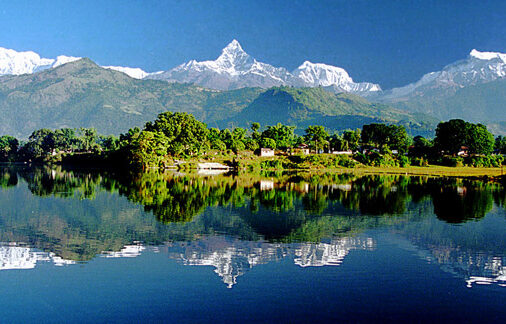
- Duration : 8 Days
- 4.5 Ratings
Step back in time and explore the rich cultural and historical heritage of Kathmandu, Nepal’s vibrant capital city. The Kathmandu Heritage Tour is a journey through centuries-old temples, palaces, stupas, and monasteries that tell the story of Nepal’s spiritual and architectural grandeur. Nestled in the Kathmandu Valley, a UNESCO World Heritage site, this tour offers a unique opportunity to immerse yourself in the artistry, traditions, and spirituality that have shaped Nepal for millennia.
Kathmandu is a city where history and modernity coexist harmoniously. As you wander through the ancient streets, you’ll encounter exquisite wood-carved temples, intricately designed stupas, and bustling markets that have remained unchanged for centuries. The Kathmandu Valley is home to seven UNESCO World Heritage sites, including Durbar Squares in Kathmandu, Patan, and Bhaktapur, as well as iconic landmarks like Swayambhunath (Monkey Temple), Boudhanath Stupa, and Pashupatinath Temple.
This heritage tour not only offers a deep dive into Nepal’s religious and cultural history but also provides a glimpse into the daily lives of the local people. From the vibrant festivals and rituals to the timeless Newari architecture, every corner of Kathmandu resonates with stories of the past. Whether you’re a history enthusiast, a spiritual seeker, or a cultural explorer, the Kathmandu Heritage Tour promises an unforgettable experience that will leave you with a profound appreciation for Nepal’s enduring legacy.
Your Kathmandu Heritage Tour begins with your arrival at Tribhuvan International Airport. Upon arrival, our representative will greet you and transfer you to your hotel. After check-in, you can relax or take a leisurely walk through the streets of Thamel, a popular tourist district known for its shops, cafes, and restaurants. In the evening, you’ll have a welcome dinner at a traditional Nepali restaurant, where you can sample local delicacies. You will spend the night in a comfortable hotel in Kathmandu.
After breakfast, you’ll embark on a full-day exploration of Kathmandu’s heritage sites, starting with Kathmandu Durbar Square. This historic area was once the royal palace of the Malla kings and is now a UNESCO World Heritage site. Here, you’ll visit the Hanuman Dhoka Palace, the Taleju Temple, and the Kumari Ghar, where the living goddess, Kumari, resides. The square is a vibrant place, filled with vendors, artists, and worshippers, offering a glimpse into the daily life of the city.
In the afternoon, you’ll visit Swayambhunath Stupa, also known as the Monkey Temple. Perched on a hilltop, this ancient stupa is one of the most sacred sites in Kathmandu, offering panoramic views of the city. The stupa is adorned with prayer flags, spinning prayer wheels, and the all-seeing eyes of Buddha, symbolizing wisdom and compassion. After exploring the stupa and its surrounding shrines, you’ll return to your hotel for an overnight stay.
Today, you’ll visit Patan Durbar Square, located in the city of Patan (Lalitpur), known for its exquisite Newari architecture and artistry. The square is home to the Krishna Temple, which features intricate stone carvings depicting scenes from the Mahabharata and Ramayana. You’ll also visit the Patan Museum, housed in a former royal palace, which showcases a collection of traditional art and artifacts. Another highlight is the Hiranya Varna Mahavihar, also known as the Golden Temple, a beautiful Buddhist monastery adorned with golden statues and intricate woodwork.
In the afternoon, you’ll visit Boudhanath Stupa, one of the largest and most important Buddhist stupas in the world. The stupa’s massive mandala is visible from miles away, and the site is a major pilgrimage destination for Tibetan Buddhists. You’ll have the opportunity to walk around the stupa, spin the prayer wheels, and observe monks performing rituals. The area around Boudhanath is also known for its Tibetan shops and restaurants, offering a chance to experience Tibetan culture. You’ll return to your hotel in Kathmandu for an overnight stay.
After breakfast, you’ll drive to Bhaktapur, a medieval city that feels like a living museum. Bhaktapur Durbar Square is a UNESCO World Heritage site, known for its well-preserved architecture, wood carvings, and pottery. You’ll explore the 55-Window Palace, the Vatsala Temple, and the Nyatapola Temple, a five-story pagoda that is the tallest temple in Nepal. Bhaktapur is also famous for its traditional potters’ square, where you can see artisans creating beautiful pottery by hand.
In the afternoon, you’ll visit Changu Narayan Temple, one of the oldest Hindu temples in the Kathmandu Valley, dedicated to Lord Vishnu. The temple is located on a hilltop, surrounded by lush forests and offering stunning views of the valley. The temple complex includes several ancient statues and inscriptions, some dating back to the 5th century. After exploring the temple, you’ll return to your hotel in Kathmandu for an overnight stay.
Today, you’ll visit Pashupatinath Temple, the most sacred Hindu temple in Nepal, dedicated to Lord Shiva. The temple complex is located on the banks of the Bagmati River and is a UNESCO World Heritage site. Here, you’ll witness the daily rituals, including the famous aarti (prayer ceremony) that takes place on the riverbanks in the evening. The temple is also a significant site for Hindu cremation ceremonies, which you can observe from a respectful distance.
After visiting Pashupatinath, you’ll explore some of the hidden courtyards and narrow alleys of Kathmandu, where centuries-old traditions are still alive. These hidden gems offer a glimpse into the daily lives of the local people, away from the hustle and bustle of the main streets. You’ll discover small shrines, local markets, and traditional Newari houses with intricate wood carvings. In the evening, you’ll return to your hotel for an overnight stay.
After breakfast, you’ll take a day trip to Kirtipur, a historic town located on a hilltop just outside Kathmandu. Kirtipur is known for its traditional Newari architecture, narrow streets, and historic temples. You’ll visit the Bagh Bhairab Temple, dedicated to the fierce form of Bhairab, and the Uma Maheshwar Temple, which offers panoramic views of the Kathmandu Valley. Kirtipur is also known for its rich culinary traditions, and you’ll have the opportunity to sample local Newari dishes.
In the afternoon, you’ll visit Dakshinkali Temple, located at the southern edge of the Kathmandu Valley. This temple is dedicated to the goddess Kali and is one of the most important pilgrimage sites in Nepal. The temple is known for its animal sacrifices, especially during the Dashain festival, and is surrounded by dense forests, making it a serene and mystical place. After visiting the temple, you’ll return to your hotel in Kathmandu for an overnight stay.
Today is a free day for you to explore Kathmandu at your own pace. You can revisit any sites of interest, shop for souvenirs in Thamel or Ason Bazaar, or relax at your hotel. If you’re interested in traditional Nepali arts and crafts, you can visit the Patan Industrial Estate, where artisans produce intricate metalwork, wood carvings, and textiles. In the evening, you’ll enjoy a farewell dinner at a traditional Nepali restaurant, where you can reflect on your journey through Kathmandu’s heritage. Overnight in Kathmandu.
On your final day, you’ll be transferred to Tribhuvan International Airport for your departure flight. As you leave Nepal, you’ll carry with you memories of Kathmandu’s rich cultural heritage, timeless architecture, and vibrant traditions, ensuring that your journey through this ancient city will remain in your heart forever.
Visa and Entry Requirements
To enter Nepal, you will need a valid passport and a tourist visa. Visas can be obtained on arrival at Tribhuvan International Airport in Kathmandu or at Nepalese embassies and consulates abroad. The visa fee depends on the duration of your stay, with options for 15, 30, and 90 days. Ensure your passport has at least six months of validity remaining and bring passport-sized photos for the visa application. Visa fees can be paid in major currencies, including USD, EUR, and GBP.
Best Time to Visit
The best time to visit Kathmandu for a heritage tour is during the spring (March to May) and autumn (September to November) seasons. These months offer pleasant weather, clear skies, and comfortable temperatures, ideal for exploring outdoor heritage sites. Winter (December to February) can be chilly but still manageable, while the monsoon season (June to August) brings heavy rainfall, which can hinder sightseeing activities.
Packing List
When packing for your Kathmandu Heritage Tour, consider the varying temperatures and cultural context. Essential items include:
Clothing: Lightweight, breathable clothes for the day; a warm jacket or fleece for cooler evenings; comfortable walking shoes; and modest attire for visiting temples and religious sites.
Accessories: Sunglasses, a sun hat, sunscreen, and insect repellent.
Gear: A daypack for carrying essentials, a reusable water bottle, and a camera with extra batteries.
Documents: Passport, travel insurance details, visa copies, and extra passport-sized photos.
Health and Safety
Kathmandu is generally a safe city, but it’s important to take standard precautions, especially in crowded areas. Drink only bottled or purified water, avoid street food from unknown vendors, and ensure your vaccinations are up-to-date before traveling. When visiting temples, be aware of your surroundings, particularly during religious ceremonies, and follow the guidance of your guide. Carry a basic first-aid kit with medications for common ailments like headaches, digestive issues, and insect bites.
Cultural Etiquette
Nepal is a culturally rich country with deep-rooted traditions and religious practices. When visiting temples and monasteries, dress modestly, covering your shoulders and knees. Remove your shoes before entering religious sites and refrain from touching statues or religious objects. Always ask for permission before photographing people, particularly in rural areas or religious contexts. Respect the local customs, and avoid pointing your feet at people or religious symbols, as this is considered disrespectful.
Transportation Options
The tour includes private vehicle transportation for city transfers and sightseeing tours. Kathmandu’s streets can be busy, with traffic congestion during peak hours, so it’s advisable to allow extra time for travel between sites. Your guide will manage the transportation schedule to ensure you have a smooth and comfortable journey. If you wish to explore independently, taxis and rickshaws are readily available, but it’s best to agree on a fare before starting your journey.
Accommodation and Dining
Accommodation in Kathmandu ranges from budget guesthouses to luxury hotels, catering to different preferences and budgets. Most hotels offer comfortable rooms with modern amenities, including Wi-Fi, hot showers, and room service. Dining options in Kathmandu are diverse, with traditional Nepali cuisine available alongside international dishes. During your heritage tour, you’ll have the chance to sample local specialties like dal bhat, momo (dumplings), and Newari dishes, which are an integral part of Kathmandu’s cultural heritage.
Local Markets and Handicrafts
Kathmandu is a haven for shoppers looking for traditional Nepali handicrafts and souvenirs. Thamel, Ason Bazaar, and Durbar Square are popular shopping areas where you can find handwoven pashmina shawls, intricate wood carvings, Tibetan singing bowls, and Thangka paintings. The Patan Industrial Estate is another excellent place to see artisans at work and purchase high-quality crafts directly from the makers. When shopping, it’s common to haggle, so don’t hesitate to negotiate the price.
Festivals and Events
Kathmandu is home to a vibrant calendar of festivals and events, many of which are deeply rooted in religious and cultural traditions. If your visit coincides with a major festival, such as Dashain, Tihar, or Holi, you’ll have the unique opportunity to experience local customs, rituals, and celebrations firsthand. Festivals in Kathmandu are characterized by colorful processions, traditional music, dance performances, and elaborate feasts, offering a deeper understanding of Nepalese culture.
Responsible Tourism
When visiting heritage sites, it’s important to practice responsible tourism by respecting local customs, supporting local businesses, and minimizing your environmental impact. Avoid littering, and dispose of waste properly. If you’re interested in giving back to the community, consider donating to local conservation projects or cultural preservation initiatives. Engaging with local guides and purchasing handicrafts directly from artisans also helps support the preservation of Kathmandu’s rich cultural heritage.
The best time to visit Kathmandu for a heritage tour is during spring (March to May) and autumn (September to November) when the weather is pleasant and ideal for exploring outdoor heritage sites.
A comprehensive Kathmandu Heritage Tour typically requires 6-8 days to explore all major UNESCO World Heritage sites, including Kathmandu Durbar Square, Swayambhunath, Boudhanath, Patan Durbar Square, and Bhaktapur.
While it’s possible to explore Kathmandu independently, having a guide enhances the experience by providing detailed insights into the history, culture, and significance of each heritage site.
When visiting temples and religious sites, wear modest clothing that covers your shoulders and knees. It’s also respectful to remove your shoes before entering religious buildings.
Must-see heritage sites in Kathmandu include Kathmandu Durbar Square, Swayambhunath (Monkey Temple), Boudhanath Stupa, Pashupatinath Temple, Patan Durbar Square, and Bhaktapur Durbar Square.
Yes, the Kathmandu Heritage Tour can be combined with other popular destinations like Pokhara, Chitwan, or Lumbini to create a more comprehensive travel experience in Nepal.
Traditional souvenirs to buy in Kathmandu include handwoven pashmina shawls, Tibetan singing bowls, Thangka paintings, wood carvings, and handmade jewelry.
Yes, Kathmandu hosts several major festivals, including Dashain, Tihar, and Holi, offering a unique opportunity to experience local customs, rituals, and celebrations.
Yes, the Kathmandu Heritage Tour is suitable for families, offering educational and cultural experiences that can be enjoyed by all age groups.
Support responsible tourism by respecting local customs, minimizing your environmental impact, purchasing handicrafts directly from artisans, and engaging with local guides and businesses.

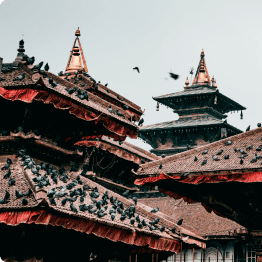
Devraj is the best! could not have asked for a better guide. cool, calm, and collected. you won’t regret it!!
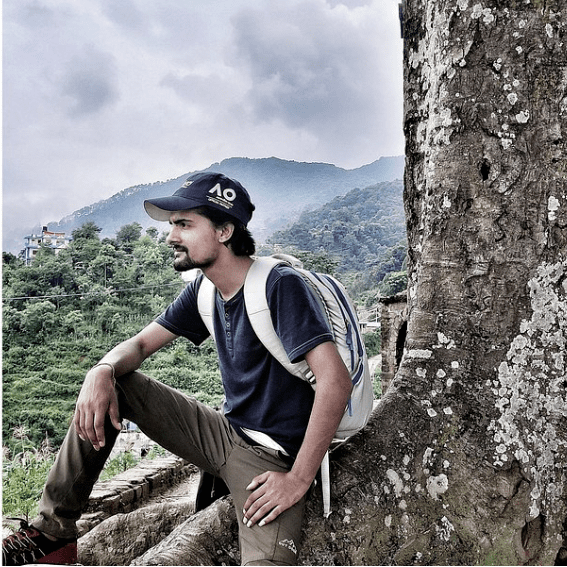
Exciting hiking to the hill of Ichangu Narayan. The flawless environment with prefect hiking condition.
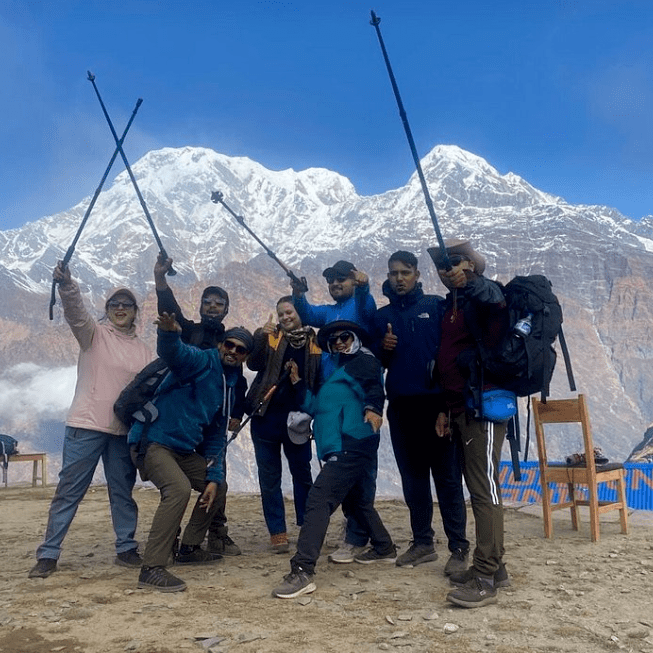
The best trekking agency ever. Guide were very cooperative and supportive.every thing here organized were of good manner.loved my trip to mardi with this team 😊
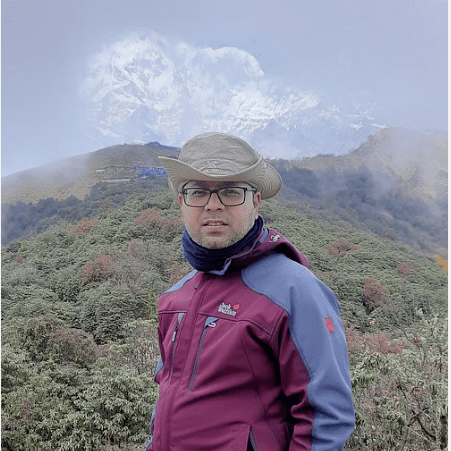
Trip to mardi was great. Amazing guide and strong porter. I felt great watching estonishing view of Machhapuchhre and Mardi himalayas.